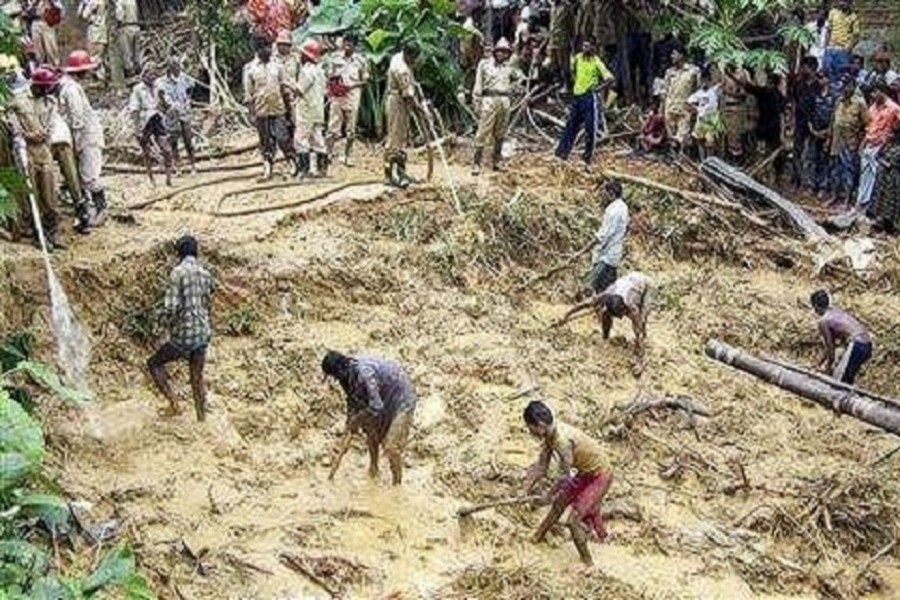
Published :
Updated :

The menace of landslide has returned also this year with a vengeance. Several lives have already been lost to the scourge this year. Landslides in the country's southeastern hilly region in greater Chattogram begin haunting people with the onset of monsoon. Due to the unabated hill-levelling and felling of trees grown on hill slopes, sights of hills standing in desolation continue to dot many areas in the region. And to the chagrin of environmentally aware people and those who value human lives, many of these hills remain filled with slums. The spots dominantly include Chattogram Port City and its adjoining areas; the Chattogram Hill Tracts including the towns of Rangamati, Bandarban, Khagrachhari and the localities deep inside the forests. Of late, the Cox's Bazar district's Ukhiya villages featuring Rohingya refugee shanties built illegally on hill slopes have emerged as a new scourge. Already the local administration had to deal with six landslide fatalities involving the refugees.
Chattogram city has become a metonymy for hill-centred landslides. In the last one-and-half decades, scores of poverty-stricken shanty dwellers living on hill-foots or hill slopes have been fatally crushed under the chunks of muddy earth in the city. Besides the loss of their meagre belongings, many sustained serious injuries. The irony is that after every such tragic occurrence, the administration is found busy framing 'stringent' rules prohibiting settlements on hill slopes. Conforming to the nature of desperate and fatalistic slum dwellers, the ban orders begin fraying in the dry seasons. Fingers are pointed at the local hill-encroaching syndicates who operate in cahoots with the corrupt employees in the district administration. But to no avail. It doesn't take longer for the hill slopes to begin teeming with slum dwellers.
However, evacuation drives do take place before the start of monsoon every year as part of a stopgap solution. In this June, the relevant authorities moved over five thousand people belonging to 120 families from 18 hazardous hills to shelters set up in different areas of the Chattogram city. But almost all the families returned to the hazardous hill slopes during a brief pause in the rain late in the month. The reasons range from monsoon-related adverse living conditions to distant locations. Keeping these phenomena in view, the city corporation ought to lay emphasis on building concrete dwelling houses at places conducive to residing there round the year. Not long ago, the extraordinary scenic beauty of Chattogram comprised its tree-covered green hills, alongside the Patenga beach. The city presented a strange look after its trees had been felled and hills flattened. Those people in charge of keeping the port city's unique beauty unspoiled couldn't care less. Taking the opportunity of this anarchic situation, the trend of building makeshift dwellings on hill slopes was brought to the city by a section of unscrupulous people. At present, there are at least 10 such risky spots in the port city.
When it comes to crashing in of massive rain-loosened earth chunks on makeshift houses, these already vulnerable hills emerge as ever looming dreads for the Chattogram region. Weathermen have forecast about spells of heavy rain in Chattogram division this year, thus increasing the fear of landslides. After the June 2017 landslides in Chattogram region's four spots that killed 130 people, the hill-dominant districts have been tolerably free of this disaster. But there are few scopes for feeling relieved. Landslides may strike anytime during monsoons. Strict ban on dwellings on hill slopes and alternative housing facilities for the poor can be the only remedies.


 For all latest news, follow The Financial Express Google News channel.
For all latest news, follow The Financial Express Google News channel.